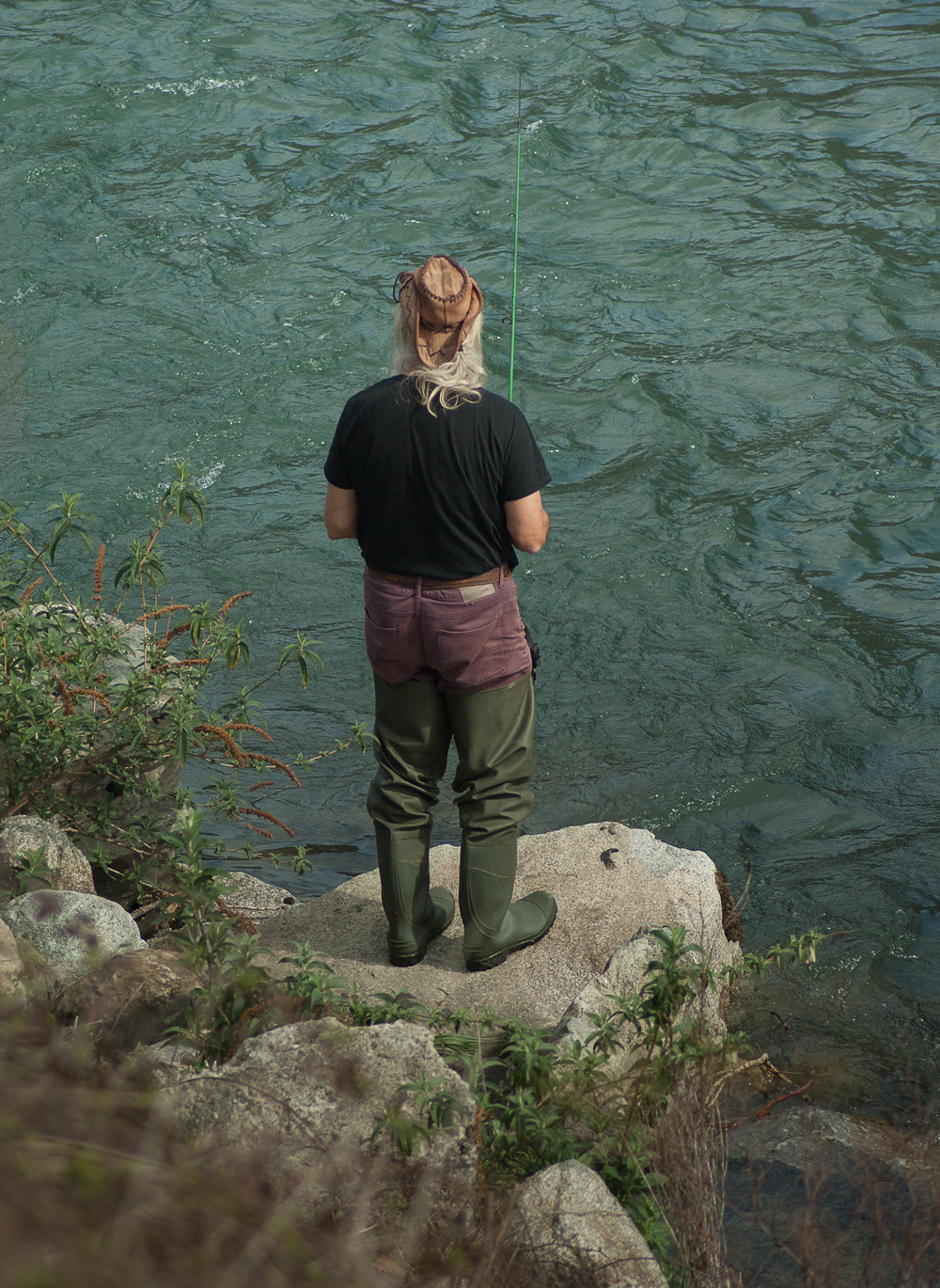Roanoke River
The Roanoke River in North Carolina is a prime destination for fishing enthusiasts, famous for its annual runs of striped bass. The river also teems with largemouth bass, catfish, and panfish, offering diverse fishing opportunities. Its rich waters and scenic surroundings attract anglers of all skill levels, who enjoy both boat and bank fishing in this historically rich and ecologically diverse waterway.

Introduction to Roanoke River, NC
The Roanoke River in North Carolina flows through a landscape rich in natural beauty and historical significance. Along its course lies the city of Roanoke Rapids, known for its vibrant community, cultural heritage, and recreational activities. The river itself is a haven for fishing, offering diverse species including the famed striped bass, making it a cherished spot for anglers and nature lovers.
Did You Fish? The Angler’s Guide to Roanoke River, North Carolina – A Fishing Haven
The Roanoke River in North Carolina, flowing through a landscape steeped in history and natural splendor, stands as a premier destination for fishing enthusiasts. From the bustling city of Roanoke Rapids to the serene waters of the Albemarle Sound, this river offers a diverse and vibrant fishing experience. Renowned for its striped bass runs and abundant wildlife, the Roanoke River invites anglers of all levels to explore its rich waters.
Rich History and Diverse Habitat
The Roanoke River has a storied past, integral to the region’s cultural and ecological tapestry. Its winding path from the Appalachian Mountains to the Atlantic Ocean creates a variety of habitats, supporting a plethora of fish species. This diversity, coupled with the river’s historic significance, adds depth to the fishing experience on the Roanoke.
A Bounty of Fish Species
The Roanoke River is celebrated for its striped bass, particularly during the annual spring migration, drawing anglers nationwide. Beyond stripers, the river is teeming with largemouth bass, catfish, and various panfish, providing year-round fishing opportunities. Each section of the river, from the upper freshwater reaches to the brackish waters near the sound, offers unique fishing prospects.
Fishing Techniques and Best Practices
Fishing techniques on the Roanoke River vary with the target species and location. Anglers fishing for striped bass often use live bait, jigs, or artificial lures, especially during the spring run. Largemouth bass fishing is popular using spinnerbaits, plastic worms, and topwater lures. Catfish enthusiasts typically opt for bottom fishing with cut bait or stink baits. Fly fishing is also gaining popularity, particularly in the upper sections of the river.
Seasonal Fishing and Migration Patterns
The Roanoke River’s fishing dynamics change with the seasons. Spring is the highlight, with the striped bass migration creating a fishing frenzy. Summer offers excellent largemouth bass and catfish fishing, while fall sees a resurgence of striped bass as they prepare for winter. Winter, though quieter, can still yield productive catches, particularly for catfish and panfish.
Access Points and Boating Opportunities
Access to the Roanoke River is plentiful, with numerous public boat ramps and fishing piers. The river is navigable for various boat sizes, offering both shore-based and on-water fishing experiences. Kayak and canoe fishing are also popular, providing a unique perspective of the river’s ecosystem.
Conservation Efforts and Regulations
Conservation is key to preserving the Roanoke River’s fishing heritage. Regulations, including size and bag limits, particularly for striped bass, are strictly enforced. Efforts by local and state agencies focus on habitat restoration and maintaining water quality, ensuring the river’s health and vitality.
Local Economy and Community Engagement
The fishing industry significantly impacts the local economy along the Roanoke River. The influx of anglers supports local businesses, from tackle shops to lodging and guide services. Fishing tournaments and community events further strengthen the region’s connection to the river, fostering a culture of conservation and appreciation.
Conclusion
The Roanoke River in North Carolina offers an unparalleled fishing experience, rich in diversity and steeped in history. Whether pursuing the mighty striped bass, engaging in a battle with a largemouth, or enjoying the tranquility of a day on the river, the Roanoke provides an ideal setting. With a commitment to sustainable practices and community involvement, the river continues to be a treasured destination for anglers and outdoor enthusiasts, preserving its legacy for generations to come.
Nestled in the heart of North Carolina, the Roanoke River is a paradise for anglers, offering a diverse range of fishing experiences. Known for its rich waters and scenic beauty, the river caters to various fishing styles and hosts an array of fish species. This article explores the thrilling fishing opportunities at the Roanoke River, highlighting the different methods and the variety of catches an angler can expect.
Fishing Styles on the Roanoke River
The Roanoke River’s diverse environment supports several fishing styles, making it a versatile destination for all types of anglers.
Fly Fishing: The upper reaches of the Roanoke River provide excellent fly fishing opportunities. Anglers can enjoy casting for trout in its clear, cold streams, where precision and skill come into play. Fly fishing in these parts is both a challenging and rewarding experience, offering a serene communion with nature.
Spin Fishing: Spin fishing is popular in the river’s lower stretches, where the water is broader and deeper. This style is ideal for targeting a wider range of species, from bass to catfish, using various lures and baits.
Bait Fishing: Bait fishing is a common practice along the Roanoke River, especially for those targeting catfish and panfish. It’s a great way for beginners to get a feel for fishing, offering simplicity and relaxation.
The Bounty of the Roanoke: Fish Species Galore
The Roanoke River is home to a rich variety of fish species, each offering a unique fishing experience.
Trout: The river’s upper sections are renowned for their trout populations, including rainbow, brown, and brook trout. These areas, with their cool, clear waters, provide ideal conditions for trout and are a favorite among fly fishing enthusiasts.
Largemouth Bass and Striped Bass: The river’s diverse habitat supports healthy populations of largemouth and striped bass, providing exciting challenges for spin and bait fishermen.
Catfish and Panfish: The Roanoke is also home to numerous catfish, including channel and blue catfish, and a variety of panfish, offering ample opportunities for anglers of all skill levels.
Conservation and Sustainability Efforts
Conservation is a key focus on the Roanoke River. Efforts are in place to ensure sustainable fishing practices and the preservation of the river’s natural habitat. Regulations set by the North Carolina Wildlife Resources Commission, including size and bag limits, help maintain healthy fish populations. Anglers are encouraged to practice catch-and-release, particularly for species like trout, to contribute to conservation efforts.
Roanoke River Fishing: A Community and Economic Boon
Fishing on the Roanoke River significantly contributes to the local economy. It attracts anglers from all over, boosting tourism and supporting local businesses, from tackle shops to lodging. Fishing tournaments and community events further enhance the area’s fishing culture, bringing together anglers and fostering a sense of community. Did You Fish?
The Roanoke River in North Carolina stands as a testament to the joy and diversity of fishing. From the tranquility of fly fishing for trout to the excitement of reeling in a largemouth bass, the river offers a fishing experience for everyone. With a commitment to conservation and a thriving fishing community, the Roanoke River remains a cherished destination for anglers seeking adventure and connection with nature.
Subscribe for Our Newsletter



